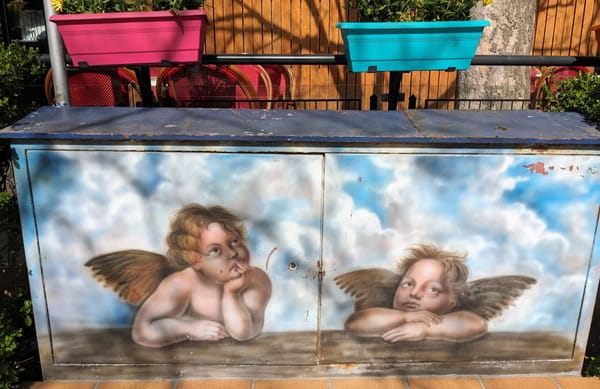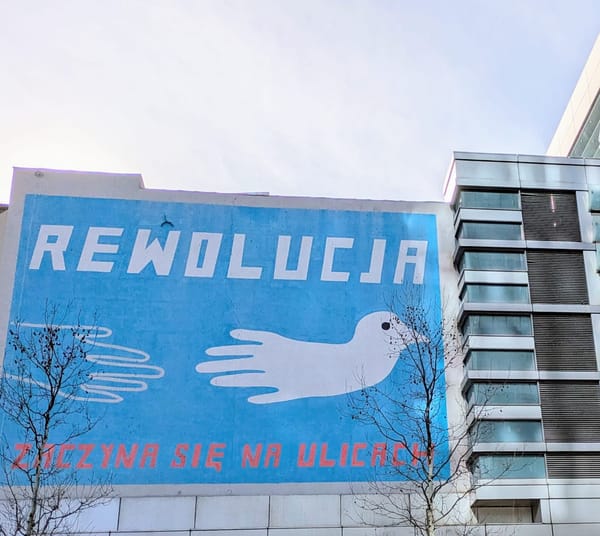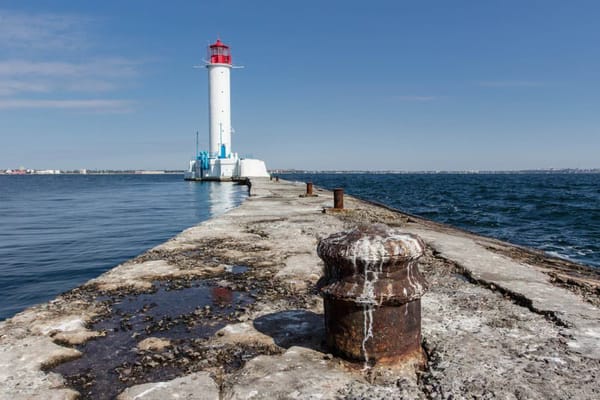Spring awakening in Sofia
Baba Marta brings light in a dark time
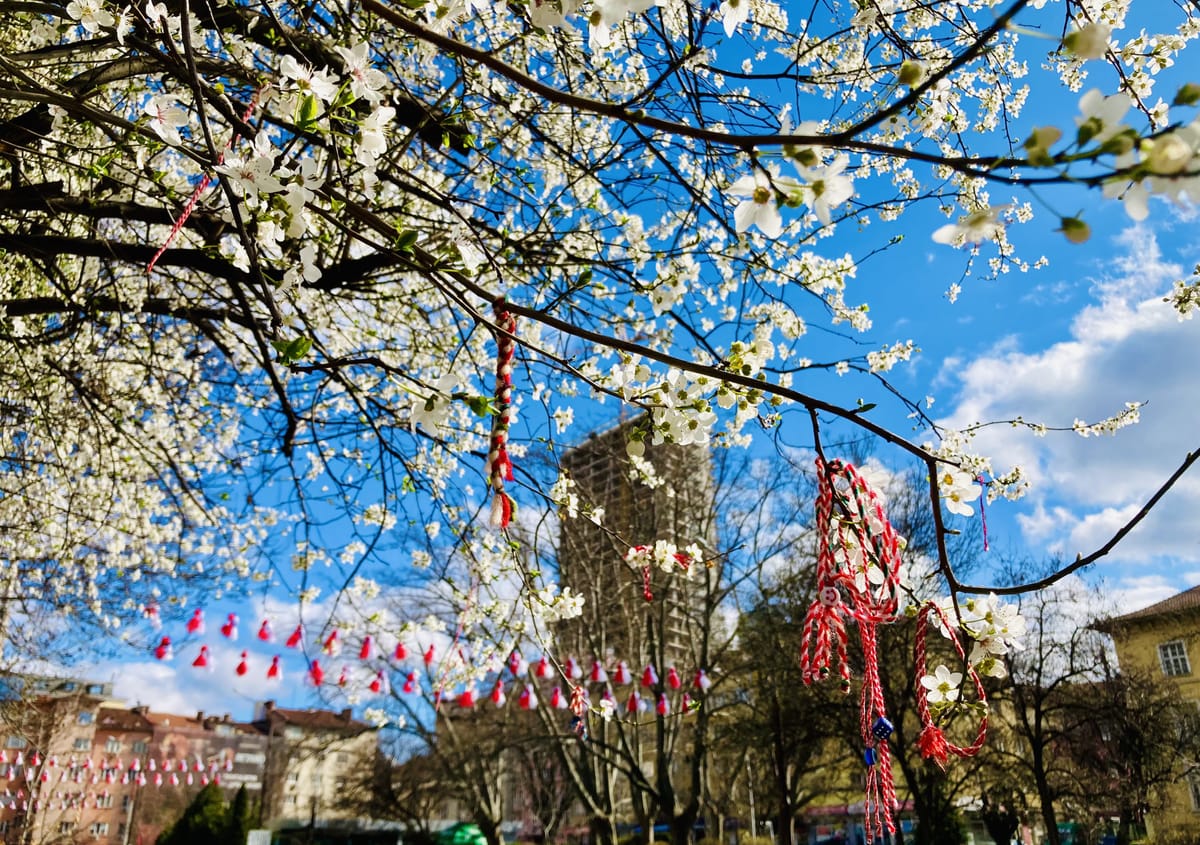
Warning: this week’s post contains elements of hopefulness and pragmatic naivety. If you aren’t prepared for these strange feelings, scroll down, past all the colorful photos, and I will point you to a critically important and compelling report from CSD and partners on efforts to combat greenwashing in Europe.
Spring has sprung in Bulgaria. The weather is nearly perfect. The birds are passing through on the way from their winter villas in Africa to their summer homes in Europe, adding glorious color to the sky and trees, and a whole new soundtrack. Among them are the storks (more on them later). The parks are full (though there is always room for one more couple to squeeze onto a bench for a reading date). And we are all surrounded in a nest of softness provided by red and white bracelets in every flowering tree.

Don’t get me wrong: the concern and anxiety has once again ratcheted up. The government is a bit of a mess, with the ruling coalition breaking down. For most of the people I speak with outside CSD, there is frustration and worry that there will be new parliamentary elections—which would be the sixth in three years.
(If you want to know more about this, get in touch). Don’t let the fact that our best and brightest journalists in the global press are showing little interest in what is a compelling and important real life drama fool you: what is happening here has major implications for the paths open to the EU in the very near future.)
Thanks for reading Notes from New Europe! Subscribe for free to receive new posts and support my work.
And, this past month was a reminder that we contain multitudes, and we can simultaneously hold worry and hope, reluctance and motivation. So back to the red and white nest of softness. March 1 is a special holiday in Bulgaria. Baba Marta day. For those of you not fortunate enough to have been introduced to Baba Marta, I’ve come to think of her as Bulgaria’s moody grandmother or cranky stern nonna. She’s like her namesake month of March (Marta), arguably the moodiest month. You want her to be happy. It is always best to be nice to your Baba, because otherwise she may bring harsh winds, snatch you bald-headed, or worse, not make you your favorite dessert.

Bulgarians know just what to do. Make or buy a martenitsa (or 20, or 50)—charming bracelets from red and white wool (other, less natural fabrics exist). And give them out to friends and family and acquaintances. The Chief of Creativity (one of her many titles) in our family is a fiber artist (one of her many skills). So she produced dozens of martenitsi. They were on the wrists of many many people. Now they are in the trees.
While it was a relatively warm winter, there were a lot of domestic, regional, and global developments that brought the collective trauma of Bulgaria into sharp relief for us. Which made me realize that this March tradition is special. We’ve had helpful guides in understanding the rituals, from Bulgarians and fellow foreign residents. The appreciation and joy seems to stretch far and wide. And everyone has very detailed memories that tend to be family oriented. For example, my main interpreter for the holiday, Kalina Tcolova-an energy an climate analyst-shares this:
In my childhood, Baba Marta was a very special tradition, a sign that spring was coming. My parents kept old martenitsi in a worn-out shoe box. Every February, me and my sisters took the box out and started our “hunt for treasures”. Some of the martenitsi were from my parents’ childhood - I really enjoyed the ones with famous animation characters, especially the ones that glowed in the dark (imagine the amazement of a 4-year old kid).
It is strikingly different from some other holidays this time of year, especially Liberation Day, which marks when soldiers in the Russian Army (I’m reluctant to say simply Russian Army lest we ignore the nationalities and cultures of the soldiers).
A few of our guides shared that they don’t get much joy from holidays where the celebrations seem to be a combination of nostalgia and present day political movements. The practice of giving and getting a martenitsa, on the other hand, is a communal act of appreciation. And, at least in Bulgaria, a multigenerational act. Clearly a moment of collective effervescence. I’ve come to see such moments as indicators of possibility and potential for communities, so noting moments of inclusive collective effervescence is critical in constructive analysis.
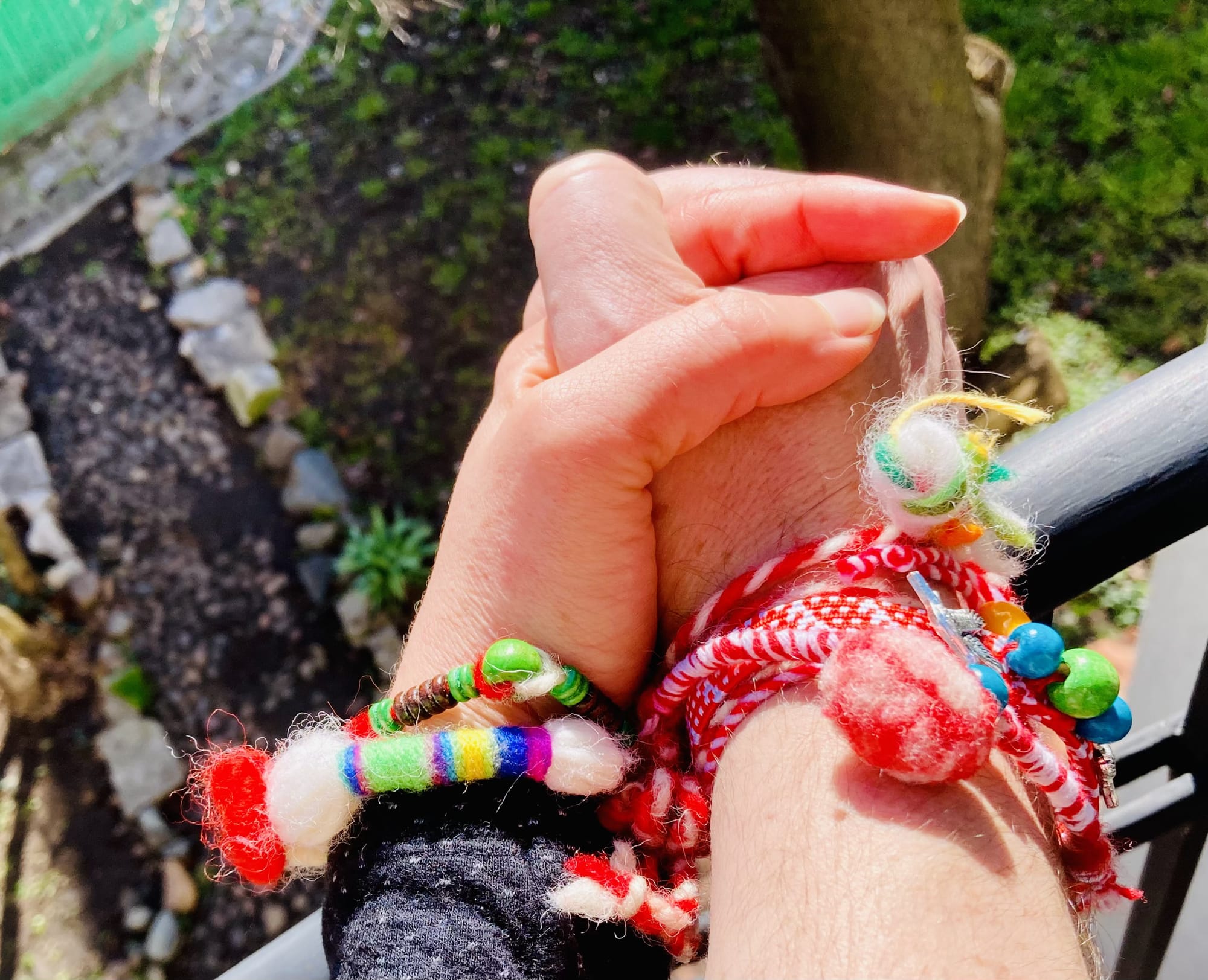
“So why are they in trees?”
If you want to keep Baba Marta happy, you are strongly advised to observe the world around you (always a good idea) and be on the lookout for blossoming trees and STORKS. When you see either, it is time to remove your martenitsa and put it on a tree branch. With this in mind, I was interested to hear this side note from Kalina (remember, part of her remit is to analyze the effects of climate change and policy efforts to accelerate the transition to green energy solutions):
“In the early 2000s, we kept our martenitsas for at least 3-4 weeks, until we see a stork or a blossoming tree. As currently we experience milder winters in Bulgaria, we also witness earlier migration of storks and trees blossoms. In 2021, I even saw a stork on 28th February, which threw me into deliberation whether I should wear my martenitsa at all. Yet, I decided to put the one I received from my partner on my coat. It’s a tradition after all.”
(Oops. I had been wondering how one puts a martenitsa on a stork. Clearly I have a lot to learn.)
As March slips out the door, I’m hunting more and more for the people in the region who are taking risks to try to make the change they want to see in the world. Seeing the challenges clearly, and not letting those challenges keep them from moving forward. (I am gathering string on these types of people for a podcast concept I’m developing called This is why we can’t have nice things/We CAN have nice things. More on that in a few weeks.)
While the aim of this newsletter is to help people from outside the region understand that what happens in New Europe is of global relevance and the rest of us need to listen to the experts here more, I am pleased that there are now many “local” subscribers. So I want to encourage you to share your Baba Marta reflections. And, curious readers from away, you may wish to ask more questions, or join us next March 1 as we spread this habit to New England.
& now, as promised, some recommended reading:
In the last couple of years, we have has one of the biggest oil companies tell us that their investments in fossil gas was part of their “renewable energy” portfolio, and one of the largest fast food businesses giving us “green” straws that are not recyclable. That is, we are reaching new levels of greenwashing.
In an effort to protect consumers from greenwashing, a consortium of researchers and analysts from across the EU, including CSD’s Iliana Boycheva, have released a comprehensive report called Enforcing Consumer Rights to Combat Greenwashing. Take a look at the full report, and think about the role of governments in mitigating this problem.
Thank you for reading Notes from New Europe. This post is public so feel free to share it.
